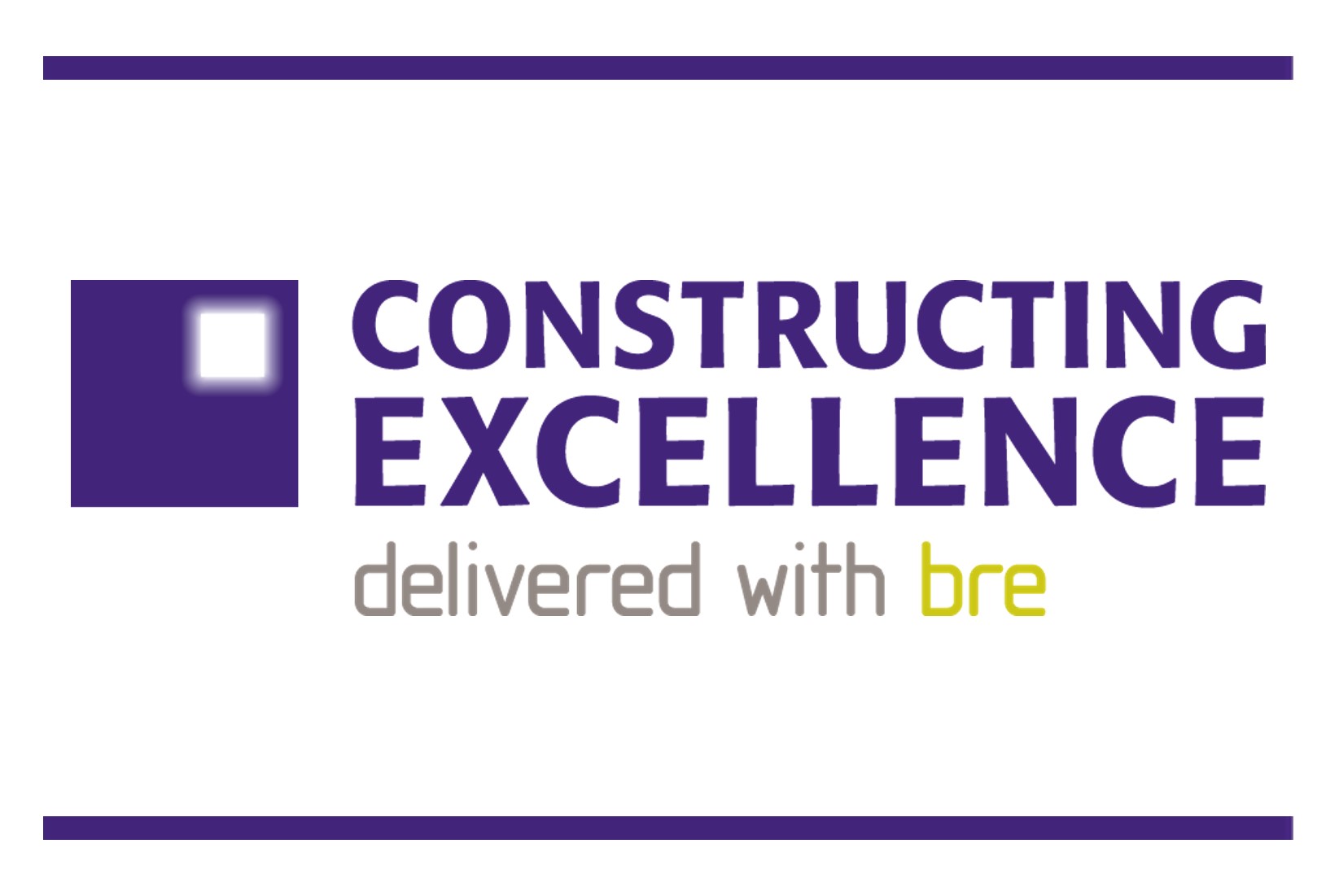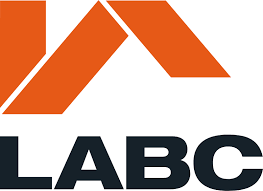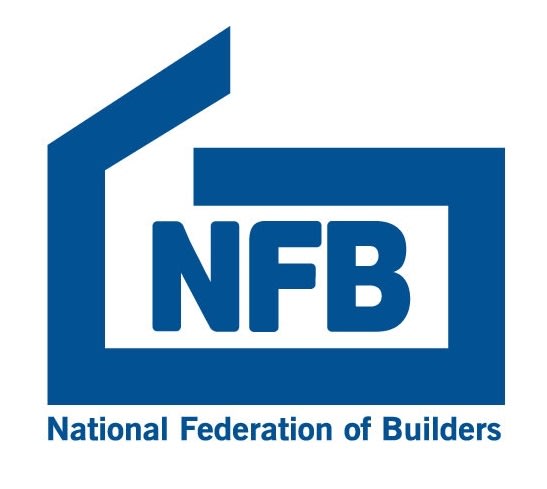We are very excited to announce Muhammad Sibi as the new Chair of the Future Skills Theme Group!
Muhammad is the Founder and Director of SibiNet Limited, an organisation dedicated to connecting diverse talent with inclusive employers across construction and the built environment sector.
Starting his career as a labourer in 2019, Muhammad has first-hand experience of the challenges faced by individuals from diverse backgrounds in a sector historically lacking in representation and inclusion.
Driven by a passion to create change, Muhammad has built meaningful partnerships across communities, industry leaders, and policymakers to help tackle the construction sector’s growing skills crisis.
Through SibiNet, he focuses on supporting individuals from underrepresented groups to build successful careers in the built environment sector, while helping employers attract, recruit, and retain diverse talent, bridging critical skills gaps and driving innovation across the industry.
Muhammad has said “I am very much looking forward to getting started and adding value to the group”
We are delighted to welcome Jedd Davies of Rider Levett Bucknall as the new Chair of the Constructing Excellence Midlands Climate Action Theme Group!
“I am thrilled to be stepping into the role of Climate Action Theme Group Chair for CE Midlands. I really appreciate the suggestion.
Having been an active member of the committee, I’ve really valued the work we’ve done to date and I’m excited about the opportunity to now help shape and drive this important agenda forward.
With my background in MEP design and decarbonisation delivery, and my current focus on leading decarbonisation strategies across the built environment, I feel I can bring both technical insight and real world experience to the role. Working with clients to develop low carbon pathways, implement energy-efficient systems, and optimise performance across portfolios has given me a clear view of the challenges, but also the huge opportunities facing our industry.
I’m looking forward to working closely with the group and wider CE Midlands network to bring some real momentum to this theme.”
All CE Midlands Theme Groups are open to our members. If you are a Regional member and are interested in joining the Climate Action Group please do get in touch info@cemidlands.org
The implementation of the Building Safety Act 2022 has introduced a transformative framework for improving safety and accountability within the UK construction industry. To help industry professionals navigate these new requirements, two important guidance documents—Building Safety Advice Note 5: Implications for Quality Management and Building Safety Advice Note 6: Impact on Designers—outline crucial responsibilities and compliance measures.
These advice notes offer essential insights into how the Act affects quality management systems and the role of designers in ensuring building safety. Below is an overview of their key takeaways:
Advice Note 5: Implications for Quality Management
CLICK HERE TO DOWNLOAD
This document focuses on the impact of the Building Safety Act on quality management processes, emphasizing compliance, accountability, and competence. Key areas include:
-
The Dutyholder Regime: The Act designates specific dutyholders (e.g., clients, principal contractors, principal designers) responsible for ensuring that buildings comply with safety regulations. These responsibilities extend across all construction projects, with additional requirements for higher-risk buildings (HRBs).
-
Competence and Skills Verification: Quality management systems must now incorporate mechanisms to verify and document the competence of professionals involved in design and construction. Standards such as PAS 8671 and PAS 8672 outline required skill sets for principal designers and contractors.
-
Mandatory Reporting & Safety Assurance: A new mandatory occurrence reporting system requires that defects and safety concerns be reported immediately, ensuring early intervention and risk mitigation.
-
Liability and Enforcement: The Act imposes severe penalties, including imprisonment, for safety breaches. It extends the period for enforcement actions against defective work from 12 months to 10 years.
To ensure compliance, firms must review and update their quality management systems, strengthen risk assessment procedures, and develop a culture of accountability through training and continuous professional development (CPD).
Advice Note 6: Impact on Designers
CLICK HERE TO DOWNLOAD
Designers play a critical role in building safety, and this guidance highlights their increased responsibilities under the Act. Major aspects include:
-
New Compliance Requirements: Designers must ensure that their work aligns with the Building Regulations 2010 (as amended in 2023), incorporating safety principles from the early design stages.
-
Enhanced Competency Standards: Principal designers must demonstrate competence in fire safety and structural integrity, supported by documented evidence.
-
Golden Thread of Information: Designers must contribute to the “Golden Thread”—a comprehensive digital record of a building’s design, construction, and maintenance that remains accessible throughout its lifecycle.
-
Collaboration and Accountability: A cross-disciplinary approach is essential, with designers working alongside contractors and dutyholders to ensure compliance at all project stages.
Why These Advice Notes Matter
Both advice notes reinforce the urgent need for cultural and procedural changes within the industry. The Act’s reforms demand a proactive approach to safety, emphasizing risk management, competency verification, and regulatory compliance. For industry professionals, these documents provide practical steps to adapt to the new legal landscape and uphold the highest safety standards.
By integrating these insights into daily practice, designers and quality managers can help ensure safer, more resilient buildings while maintaining compliance with the evolving regulatory framework.
We’re thrilled to announce the launch of G4C East Midlands and are looking for motivated individuals to join our committee!
This is your chance to be part of an exciting network that’s shaping the future of the UK construction industry.
Why Get Involved?
As a committee member, you’ll benefit from:
- Access to innovative industry thinking
- Career growth opportunities beyond traditional paths
- Networking with like-minded, high-achieving professionals
- A platform to voice ideas and influence the future of the industry
- The chance to help drive G4C events and connect the younger generation in construction
Our Mission
G4C East Midlands aims to enhance collaboration, share knowledge, and create a space for young professionals to grow within the construction industry. We’re part of a larger national network, and together, we help drive forward industry innovation and change.
Join Us!
If you’re passionate about construction and eager to help shape the future, we want to hear from you. Don’t miss the chance to make a difference while accelerating your career.
Interested? Please fill in this application form
Have any questions? Please Contact Mariam or Alex
Welcome to the Constructing Excellence Midlands newsletter. It is an exciting time within your club; there is plenty happening, on many fronts, as the industry gets to grips with the repercussions of international news and the consequences of a change in Government. This change means that there has never been a better time to take advantage of your membership and get involved with the various theme groups and meetings to hear how others are addressing industry challenges.
One of those changes that will affect us all are the consequences of the Grenfell Fire. There is now a statutory duty for all businesses to demonstrate the competence of their staff. This applies throughout the supply chain and includes employees on site and in the office. The Building Safety Regulator is charged with supporting industry to demonstrate competence of these people. Reporting to the Building Safety Regular are competence committees and steering groups, and these oversee the work of a large cohort of over a thousand volunteer experts from across industry who are working to define individual competencies. You may think that you and your organisation know what a competent person is, but the definition of competencies that will matter are those that inform the view of the Building Safety Regulator and these are being worked through by these groups.
This work has crucial importance to our sector. Set the competence level too high and companies will struggle to meet the standard, creating a shortage of workers to deliver projects. Set them too low and quality that the Regulator seeks, to reduce the risk of poor design and delivery, will be missed. Some sectors are looking to use the competency work to drive upskilling within those sectors, which maybe fine, provided that the timescales are achievable and the courses exist to facilitate additional skills. Competency is a measure of four elements: Skills, Knowledge, Experience and Behaviours (SKEBs) How do you think that your teams, and your supply chain teams will measure up to these statutory competencies? Information on this work is available on the Construction Leadership Council’s website and those who are interested should search here to find out the standards by which they will be judged.
Under the Building Regulations Amendment Regulations 2023, there is also a requirement for every organisation carrying out any building work or any design to have the organisation capability to deliver this work. The work on organisational competence has not yet started in earnest, but it has to be critical for procurement teams, who are statutorily bound to only contact with competent organisations. It is going to be fascinating to see where the benchmark is set, but you might imagine a number of requirements around collaboration, payment and communication.
My suggestion is that all companies need to look at the implications to your employees and your organisations. Change takes time and there may be commercial opportunities for those who are prepared when procurement catches up with statute. For individuals, I suggest an early check on your SKEBs relative to the standard set by your sector, would be worthwhile. If it is not yet ready, then I’d suggest getting involved and influencing the outcomes of these debates.
Constructing Excellence Midlands wishes all its members every success and urges you to take advantage of the opportunities presented by your club.
There’s a lot happening with procurement right now, which is opening opportunities for a more strategic approach by public clients.
The recent launch of the National Procurement Policy Statement and the Construction Leadership Council’s public sector procurement guidance, ‘Potential solutions to common evaluation issues faced by Clients in the built environment sector”, and the passing of the Procurement Act, are opening up opportunities for a more strategic approach to procurement by public clients.
This month, Martyn Jones examines how this fresh guidance and legislation provides the opportunity for clients to take a more strategic approach to procurement in delivering their policy objectives.
In essence, the intention is to encourage and support public clients to assemble more strategically aligned supply chains to deliver more innovative, valuable, predictable, and sustainable outcomes.
This more strategic approach to procurement can also be seen as addressing the deep-seated problem in construction – the all-to-often misalignment between the strategies of clients and their suppliers, supply chain relationships and operational practices.
The National Procurement Policy Statement recognises public procurement as a “key lever in achieving the Government’s missions by sourcing goods and services that deliver value for money, including social and economic value across the commercial lifecycle that drives sustainable economic growth and benefits local communities, raising living standards in every part of the United Kingdom”.
The Procurement Act aims to simplify and modernise public sector procurement, promoting efficiency, transparency, and fairness, while encouraging SME and social enterprise participation.
It aims to ensure that public money is spent effectively, promoting economic growth, and delivering social value in line with the government’s 5 missions to deliver a decade of national renewal.
Its key objectives include adopting a simpler and more flexible commercial system with a more streamlined and flexible approach to procurement, making it easier for suppliers to engage with the public sector.
It calls for greater transparency in procurement, ensuring that public spending is transparent and subject to proper scrutiny focusing on value for money, economic growth, and social value.
Then there’s capability – supporting investment in innovation, skills, digital, offsite, quality, and the whole-life performance of built assets, especially in relation to environmental performance and safety.
Also offering a new “competitive flexible” procedure allowing contracting authorities to use more flexible approaches to procurement.
This means public clients can effectively interact with the market and supply chain assets, deploying early market engagement – the process of engaging with suppliers before buying.
What are the benefits of early engagement? Well, it can help generate more innovative and targeted value solutions through a greater understanding of the capabilities and maturity of potential suppliers, as well as revealing the risks and challenges.
It also presents opportunities to not only identify the skills, knowledge, and experience of tenderers but also their behaviours and collaborative capabilities against criteria such as: The maturity of their relationship management approach; their depth and scope of learning and innovation; their leadership; their customer focus; and the effectiveness of their analysis, planning, and problem solving.
This pre-appointment interaction between buyers and suppliers presents the opportunity for developing greater mutual understanding and more open relationships – a precursor to undertaking relationship management in post-appointment project teams and supply chains, as described in last month’s article.
But is market engagement viable for all clients? Well, the decision to adopt it will depend on a project’s desired objectives and outcomes, and the complexity and sensitivity of the works (cladding remediation being a good example of the need for well-developed customer-facing behaviours).
And a word of caution on behavioural assessments. Most projects in construction do not justify or require them as part of the procurement process. It’s not always feasible to invest the time and resources necessary so any early interaction with the market needs to be proportionate to the specifics of each project and its supply chains.
And then many clients may not have the necessary nous needed for meaningful engagement so this could be a role for the client advisor as set out in the CESW and Midlands publication, ‘Client advisor guide’. Less frequent clients may opt for one of the many frameworks, which provide market engagement and more straightforward access to contractors and consultants with the attributes being sought.
Given this new cluster of guidance and legislation, coupled with much previous guidance, such as the Construction Playbook, are we finally seeing a more strategically and operationally aligned way of thinking about procurement in the wide range of very different supply chains that collectively constitute our industry?
Mediation has been very much a part of the dispute resolution landscape in the construction industry for over 30 years. On 1 October 2024, a historic change to the status of alternative dispute resolution in the civil justice system took effect. Amendments to the Civil Procedure Rules (CPR) came into force to promote the use of alternative dispute resolution including mediation. The amendments bring the rules in line with the Court of Appeal decision in James Churchill -v- Merthyr Tydfil County Borough Council [2023].
As a result of the amendments the use of mediation is likely to increase significantly – but when is the best time to mediate?
Gowling WLG, in collaboration with the University of Manchester, are undertaking a ground-breaking research project, the aim of which is to investigate when parties mediate their disputes. What are the influences on the decision-making process? Will the new Amendments to the CPR have any impact on timing?
The start of the research project is a short questionnaire that will enable the collection of data from those using mediation. This will be invaluable to the whole research project.
Take part in the research
To take part, we’re looking for participants with practical experience of the use and timing of mediation in commercial dispute resolution. If you fit the criteria you can answer our survey by clicking on this link. We look forward to your valuable input.
This research attempts to collect data from professionals who have practical experience of the use and timing of mediation in commercial dispute resolution. If you are interested but have no genuine experience, please email the researchers peter.fenn@manchester.ac.uk or obuks.ejohwomu@manchester.ac.uk
You are being invited to take part in an online questionnaire/survey about the use and timing of mediation in dispute resolution. The research is being carried out at the University of Manchester in collaboration with Gowling WLG, a multinational law firm. Gowling WLG’s involvement is limited to circulation of the questionnaire, and they will have no access to the data you provide. In any event the questionnaire is anonymous and confidential and no personal identifiable is collected [we do NOT collect your IP address].
FIND OUT MORE HERE
The Education Landscape Programme, developed by SDN in partnership with The Gatsby Foundation, provides free, independent resources to help businesses navigate and engage with the education sector.
Key Resources:
· The Education Landscape Guide – A clear overview of the education system and how businesses can benefit from engaging with it.
· The Education Landscape Index – A practical tool outlining five key ways businesses can get involved:
1. Supporting Students – Inspire career choices through mentoring and industry talks.
2. Supporting Teaching – Share industry insights to improve education quality.
3. Providing Workplace Experience – Offer site visits, internships, or work placements.
4. Providing Expert Guidance – Help shape curricula to match industry needs.
5. Work-Based Learning – Develop talent through apprenticeships and on-the-job training.
Why Get Involved?
· Access Future Talent – Connect with skilled students and graduates.
· Upskill Employees – Support staff development through partnerships.
· Boost Brand & Influence – Strengthen industry reputation and shape the workforce.
Explore resources & get started: educationlandscape.org.uk
By engaging with education, businesses can help shape the future workforce and bridge the skills gap!
We are sad to say that Joanna Poon will be stepping down as Chair of the CE Midlands Future Skills Theme Group as she leaves her post at Derby University this month.
We would like to thank Joanna for her excellent work with the group and wish her the very best in her new role.
This leaves the theme group seeking a new Chair. If. you are already involved with the Future Skills group and are interested in stepping forward as the next Chair, please do get in touch by emailing emma.hannam@cemidlands.org
















